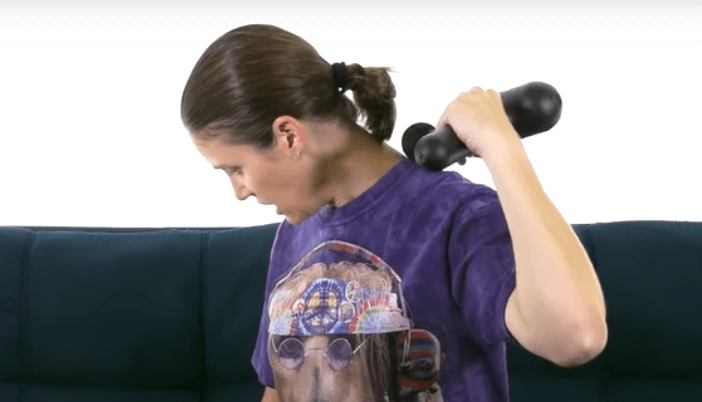The safety of percussion massagers has been a question that many people have been asking. There has been a lot of conflicting information online, so it’s time to lay this debate to rest once and for all.
In this blog post, we will answer the question “are percussion massagers safe?” by giving you the research-backed facts about what science says in regards to their safety.
Table of Contents
What Is A Percussion Massager?
The percussion massager is a neck or shoulder massager device that is used to stimulate the body’s pressure points. It uses either rubber or nylon balls and has an adjustable speed setting.
The percussion massager was originally designed for physical therapy, but people soon found other more enjoyable ways to use it. Many massage therapists now recommend this type of vibrating massage as part of their treatments because of its effectiveness in relieving tension and increasing blood flow.
Whether you are looking for relief from stress or just want some relaxation time at home, these devices work wonders!

How Does A Percussion Massager Work?
Percussion massagers use a vibrating wand to help stimulate muscles and reduce tension. The wand hits on the skin in various ways, depending on which muscle group needs stimulation.
For example, hitting your back with quick taps might work for tight shoulders while more of a thudding motion could be used for sore hamstrings or lower-back pain.
Some people like to use percussion massagers after a workout, while others prefer them for relaxation or even during pregnancy as they can help with swollen feet and cramping.
Also, percussion massagers are typically used on the back, neck, shoulders, arms, and legs all over the body in order to promote muscle relaxation by vibrating at different frequencies.
However, there are safety concerns if you have a pacemaker or other implantable medical device because they could be damaged by the vibrations through your skin.
Is It Safe For Children and Peoples?
Anyone who is healthy enough to use a regular massage can use a percussion massager. There are no age restrictions and the device does not need any tools or expertise for operating.
The only potential risk with a percussion massager is that it could cause bruising. If you meet people who have any kind of injury, or if the skin on their back is sensitive to touch, then they should not use a percussion massage device for safety reasons.
Besides, a common misconception about these devices is that they are painful. But this is not the case.
A percussion massager is designed to be used in tandem with regular massage techniques so that it doesn’t hurt people or break skin when they are being touched by them and can even help therapy sessions go faster for many clients.
Are There Any Disadvantages To Using One?
A few disadvantages of using a percussion massager,
Percussion massagers are not without their downsides. This type of massager is typically the most expensive, and it can cause some skin irritation for people with sensitive skin (especially if it’s combined with heat).
Some users have also reported that percussion massages don’t feel as deep or therapeutic on the muscles as other types do.
The disadvantages might not seem like much, but it’s still important that you’re aware of them before making your purchase decision.
Read: Top Benefits of Percussion Massagers
In Conclusion
We hope you have found this article informative, and it has answered your question. Also, please note that this article is not intended to replace the advice of a doctor. So it would be better to go to the doctor before purchasing a percussion massager to make sure there are no other health conditions.

